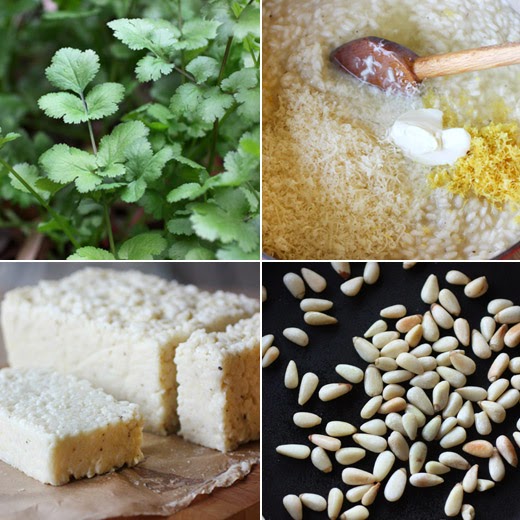Although this is a Lenten, vegetable-based kind of gumbo, the recipe does call for chicken stock. I made some vegetable stock to use instead. To begin, you need to make a roux in a wide, heavy pan like a Dutch oven, and making roux is one of those cooking-related tasks that I really enjoy. I love watching the color slowly transform from beige to brown while stirring and stirring. For this recipe, the roux was taken to a peanut butter color. At that point, the trinity of finely chopped onion, celery, and bell pepper was added. Next, finely chopped garlic, those lovely little chopped turnips, and some chopped green onions were added and allowed to cook for about five minutes. For the greens, I used washed and torn kale leaves and spinach leaves along with the leaves from the turnips. All the greens nearly overflowed from the pan, but they cook down in no time. Once the greens were wilted, thyme leaves and file powder were added followed by the vegetable stock. The stock was added slowly, brought to a boil, and reduced to a simmer. A bouquet garni of parsley stems, a bay leaf, and thyme sprigs was added to the stock, and it was left to cook for an hour. If you’re making the fried oysters, the oyster liquor can be added, and Worcestershire sauce is suggested for seasoning as well. To make the oysters, they were first dusted with cornmeal and then quickly fried just until golden. The oysters I brought home for this were tiny, so they only cooked in the hot oil for about two minutes. The gumbo was served with white rice, the fried oysters, some extra chopped green onions, and hot sauce on the side.
I now know that regardless of the main ingredient in a gumbo, it’s always a fun and delicious dish. The trinity cooked in a brown roux never fails, and I never get enough of liberally dousing a gumbo with Crystal hot sauce. The greens and turnips cooked to a completely tender state and took on the flavors of the herbs and aromatics. I still love a good seafood gumbo, but I think this vegetable version, with or without the oysters, deserves more attention than it gets.
I am a member of the Amazon Affiliate Program.

Tweet




























